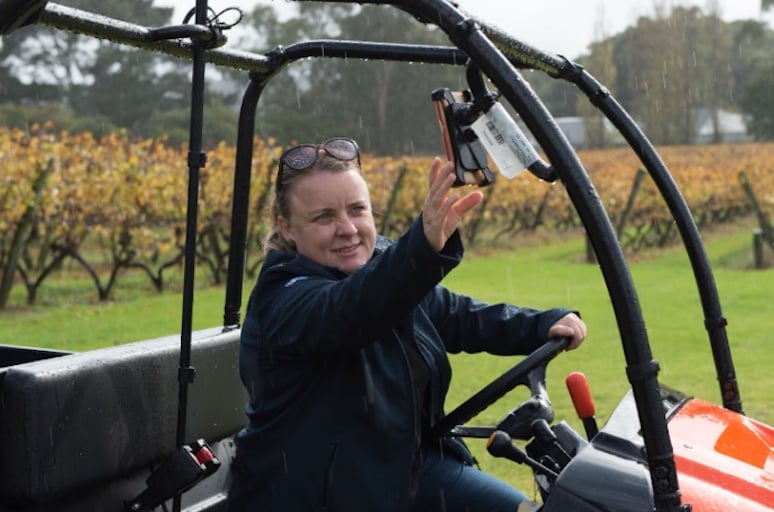Precision farming is about to get a whole lot more precise with a wave of 5G technology showing economic and productivity benefits to the viticulture industry.
Growers are increasingly interested in the advantages that 5G has to offer the industry by saving money, time and maximising yield.
Platfarm is a spatially based tasking and GPS tracking app for the viticulture industry developed at Lot Fourteen in Adelaide, South Australia that allows growers and farmers to manage their land via a smart device.
CEO and Co-founder of Platfarm Lyndsey Jackson said that with a mobile phone and a good antenna, you can get 1cm of accuracy.
“Being able to really accurately know where either the machine is or fences vine rows, things like that are going to be really critical,” Jackson said.
This precision is important in the viticultural industry by tracking what vine rows have been worked on to avoid complications.
“If you’re spraying for pests and diseases but have to go fill up your tank… when you come back and you’re a row out, then that can dramatically increase the chance of pests and fungi – that’s how outbreaks happen,” Jackson said.
“But with 5G, if you get down to 1cm accuracy, then you’re starting to be really precise about where the location is.”
Last month, Platfarm went to a demonstration day supported by Wine Australia in the Mornington Peninsula to be a part of a 5G/GPS trial with Frontier SI and Position Partners to evaluate its economic benefit.
The trial was funded by the Australian Government as part of the Australian 5G Innovation Initiative to demonstrate the benefit that 5G has on precision farming.
Position Partners used drone flyovers for Near Real-Time Image Processing while Platfarm looked at testing the accuracy for the GPS tracking in the vineyard, through the capabilities of 5G.
“You can start to have really accurate movement of data and location,” Jackson said.
“Then you’re building a tool that really help growers with analysis and directing work for their team while they’re out in the vineyard.”
Jackson said that farmers have reacted positively to this AgTech innovation as it becomes increasingly popular among growers.
“We’re really hitting at a point where our farmers are really positive about adopting technology on their properties,” she said.
“We can definitely see that things are changing – the climate’s changing, fertilisers are getting more expensive, customers are demanding more sustainable growing methods that are improving the quality of the soil.”
Jackson said in broadacre they can afford to have lots of tech – especially expensive tech – because the machinery and scale is already so big.
“They have really good receivers and they’re using satellite for that GPS location,” she said.
But in viticulture and horticulture they have smaller blocks and tractors, where they don’t have the technology in them which is unaffordable.
5G technology will provide a more affordable option for farmers via their smart device.
“As 5G improves, the accuracy from just a mobile phone is going to improve,” Jackson said.
“You can see that then you’re starting to make things really affordable and that technology is getting really cheap and accessible at that level.”
Jackson said in the future technologies will increase productivity such as robots and autosteer where GPS precision is essential.
“If you’re a farmer and you’re on your auto-steering tractor… you still have to be on it, but your hands are free to do other things, you don’t have to just have your hands on the wheel,” she said.
“So growers are really excited for that cause it means that they can do more with what they’ve got.”




















Trending
Daily startup news and insights, delivered to your inbox.